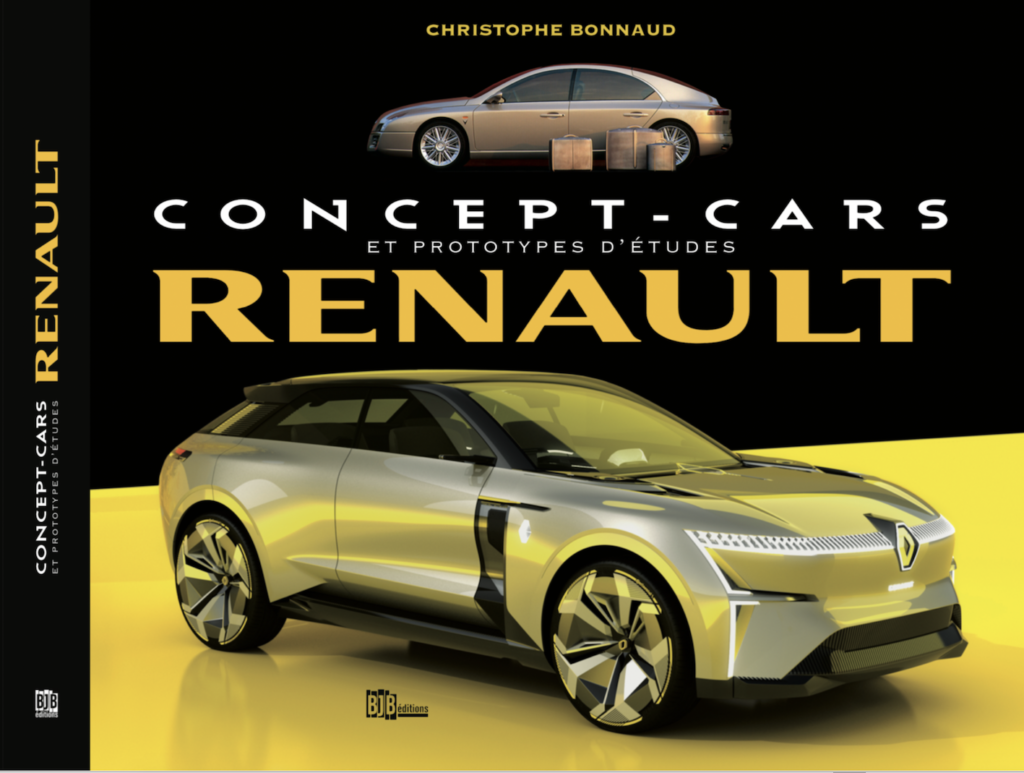
In 1991, Renault unveiled the second concept car designed by Patrick le Quément when he took over as head of design for the brand: the Z-01 project, which was to be the first and which gave way to the Laguna roadster in 1990. It is now thirty years since this concept was unveiled. It went on to revolutionise the car market by creating the ‘compact MPV’ segment. A success that would last until the arrival of the crossovers…

Only the strongest car companies have tried to keep a ‘classic’ MPV in their range, such as Volkswagen with the Touran alongside its Tiguan SUV or Renault with its Scénic alongside the Kadjar SUV. But the days of these models are numbered, swept away by the SUV craze..
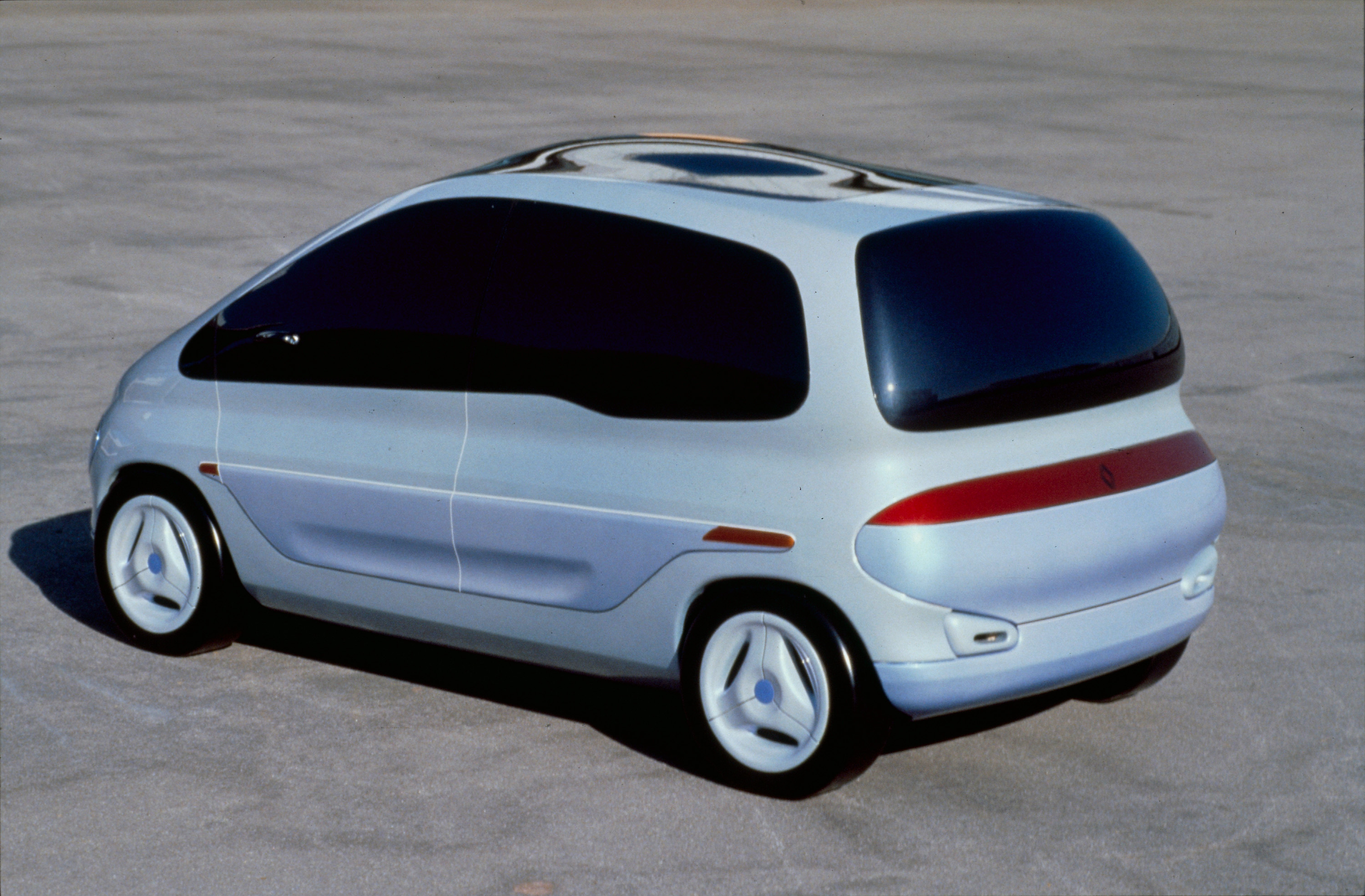
Yet while GTIs were proliferating on our roads, no one had yet thought of giving children the comfort and environment on board that they were entitled to. As much as their parents sitting comfortably, right there in front of them… Nobody? Not quite: in 1988, when the Supercinq was at the height of its career and the Clio and Twingo did not yet exist, the (new) Renault design boss, Patrick Le Quément, wrote a note that marked the start of a fabulous adventure, that of all the generations of the Renault Scenic.
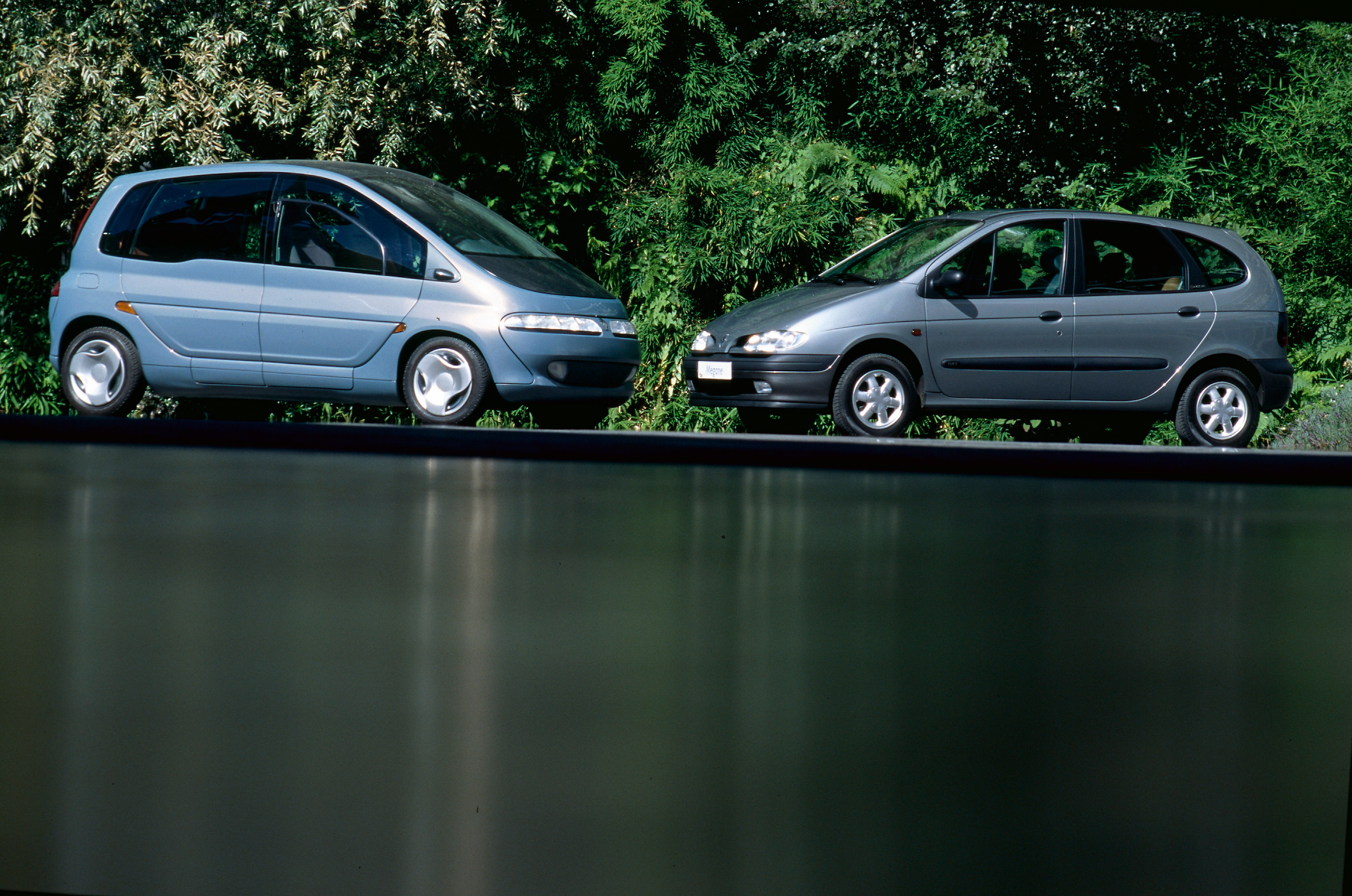
Addressed to Aimé Jardon, Renault’s deputy general manager in the technical direction, to Jacques Cheinisse, director of the product and to Georges Douin, director of the design office, the memo 90/88 from the 0895 Renault Design department is carefully preserved by Le Quément. “It is a letter that I sent on 25 October 1988 in which I wrote an assessment of the Mégane operation, our top-of-the-range concept car unveiled at the 1988 Paris Motor Show. In the same note, I made proposals for the concept car for the 1990 Paris show.“
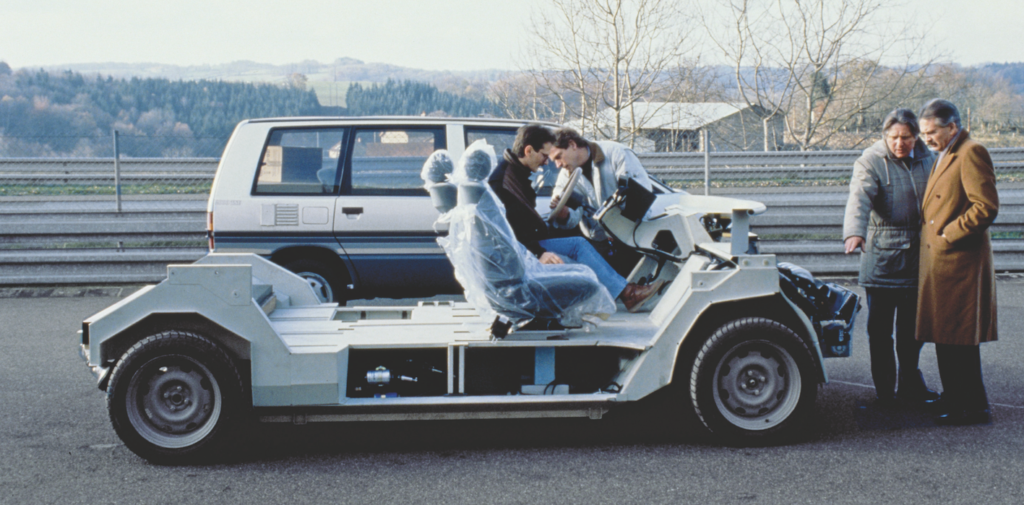
“In the second issue I mentioned a compact MPV concept called Minimax, a model based on the dimensions of the newly unveiled R19. This note explained that this extension of the unibody image towards traditional automotive values was necessary to prepare our future projects, be it the second generation Espace or the derivative of the future W64, the 1995 Mégane we were already talking about.“

In addition to this architectural concept, the famous 1988 letter also mentioned the “car passion” part with the concept of what would become the Laguna roadster in 1990. Renault chose to present the roadster first (Paris 1990) and then the Minimax, which became the Scénic concept car at Frankfurt in 1991. This note is accompanied by two sketches of the Laguna and Scenic roadster. These drawings are signed by Jean-Pierre Ploué…

While the Laguna model was being built and unveiled at the 1990 Paris Motor Show, the Scenic project, known only by its code name Z01, fell into the lap of Jean-François Venet, who was in charge of concept cars. As with all projects, a competition was launched. Jean-Pierre Ploué and Xavier Allard took part in the programme. Anne Asensio produced the synthetic gouache used to create the prototype.

For the interior, the dashboard and seats were designed by Udo Hischke, while Yves Legal was responsible for the interior design. Patrick Lecharpy and Jean-Pierre Ploué worked on the development of the sliding central console at the Italian subcontractor Coggiola, a console that we will find on the second generation of Scénic and not on the first, because Renault had not managed the costs of this equipment…
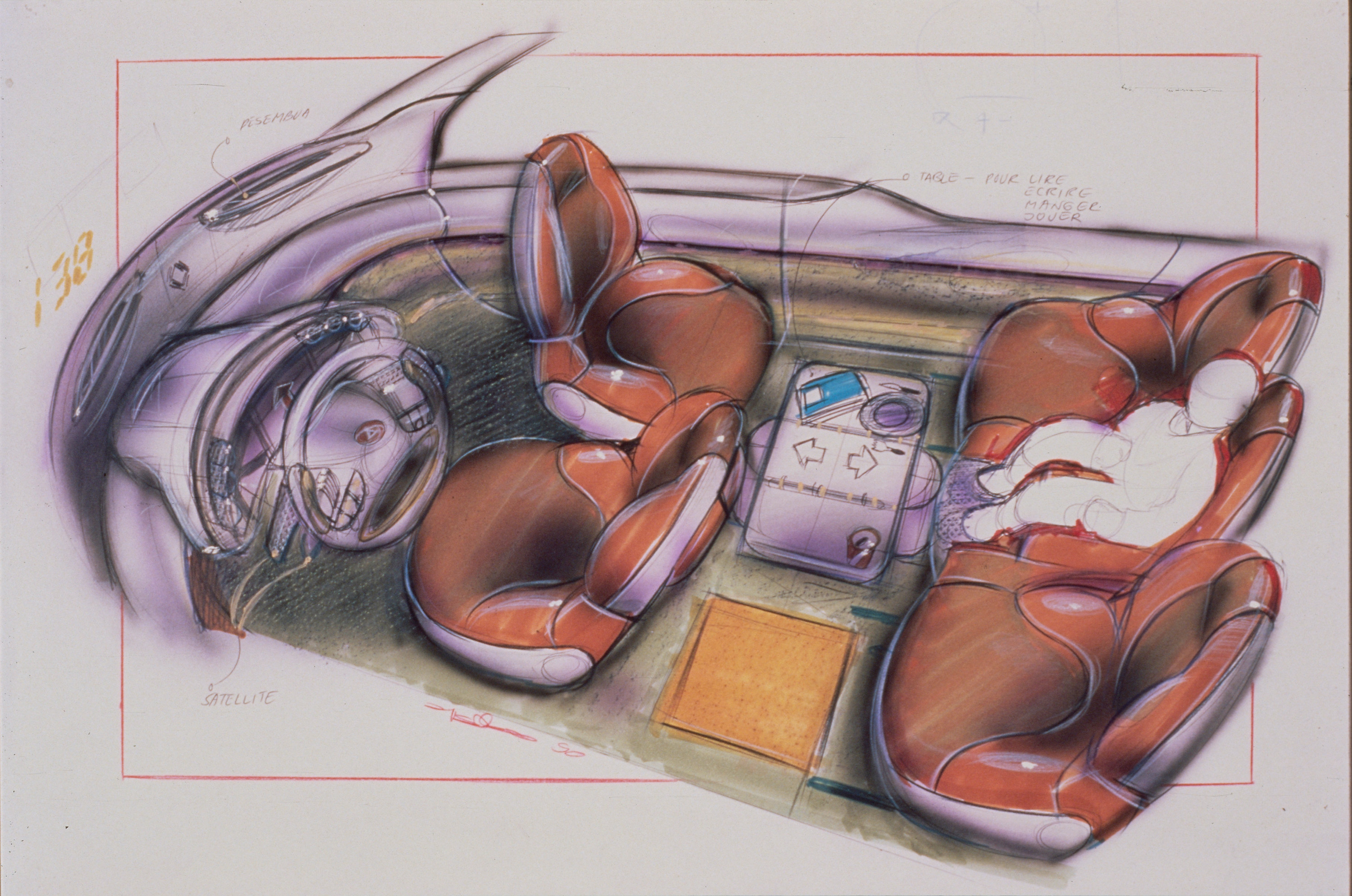
On board, the air conditioning unit disappeared from under the dashboard to be housed in a double floor – a solution later adopted by the Espace – an architecture thought up by the advanced design team and by engineer Christian Dutot. It made it possible to gain in habitability. Two sliding doors on the right, a 2.0-litre engine and four-wheel drive – it was the era that wanted it… – and the first Scenic was born.
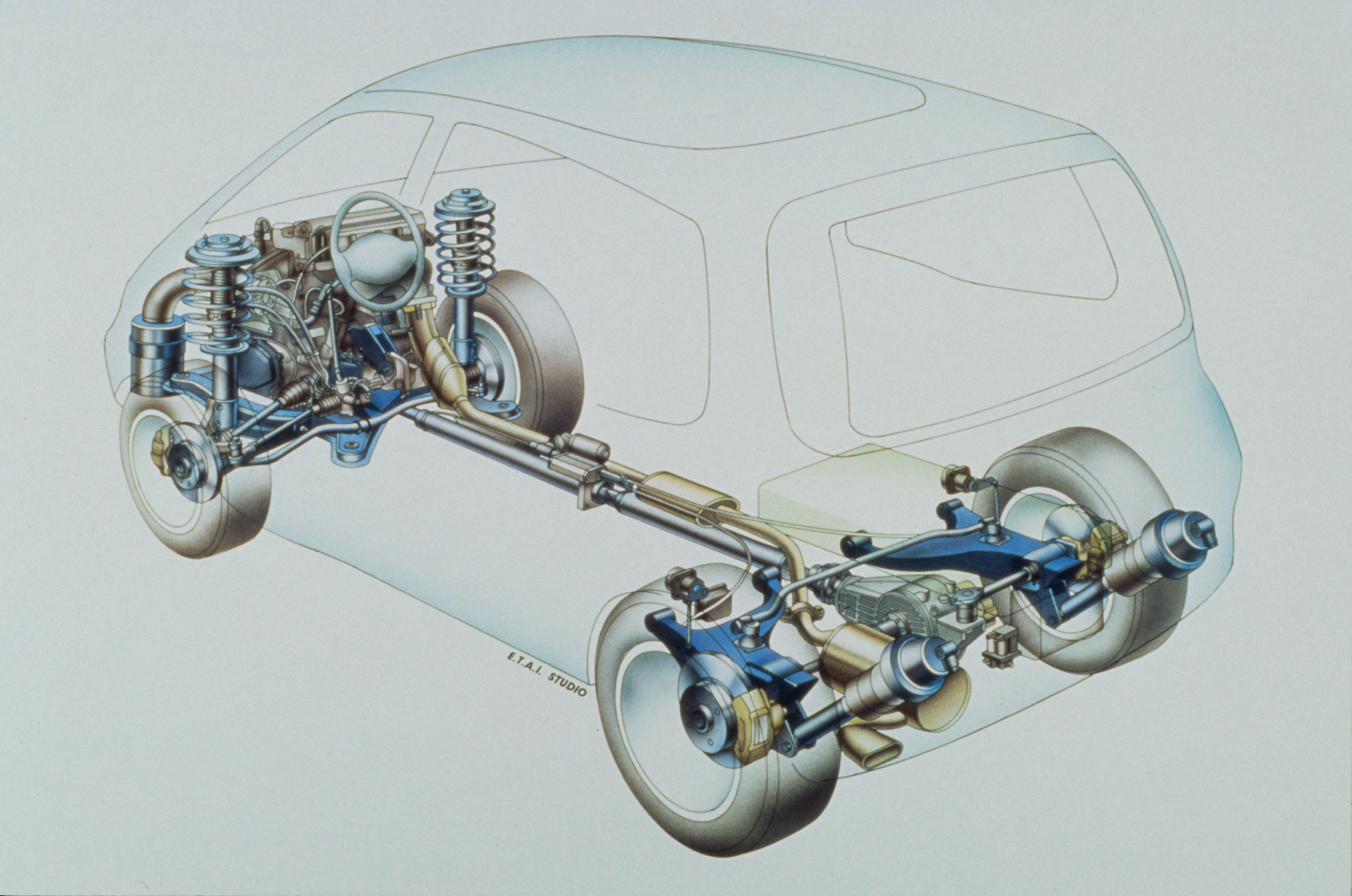
All that remained was to give it a traveller’s soul, which was done by Martine Chevillot’s team, who headed the colours and materials team. With her, Sophie Milenovich and Bénédicte de Sainte Marie developed the first “poetic specifications” in the history of the automobile: a travel log which, in 1990, already contained all the modularity and on-board living tips of the first generation Scénic.
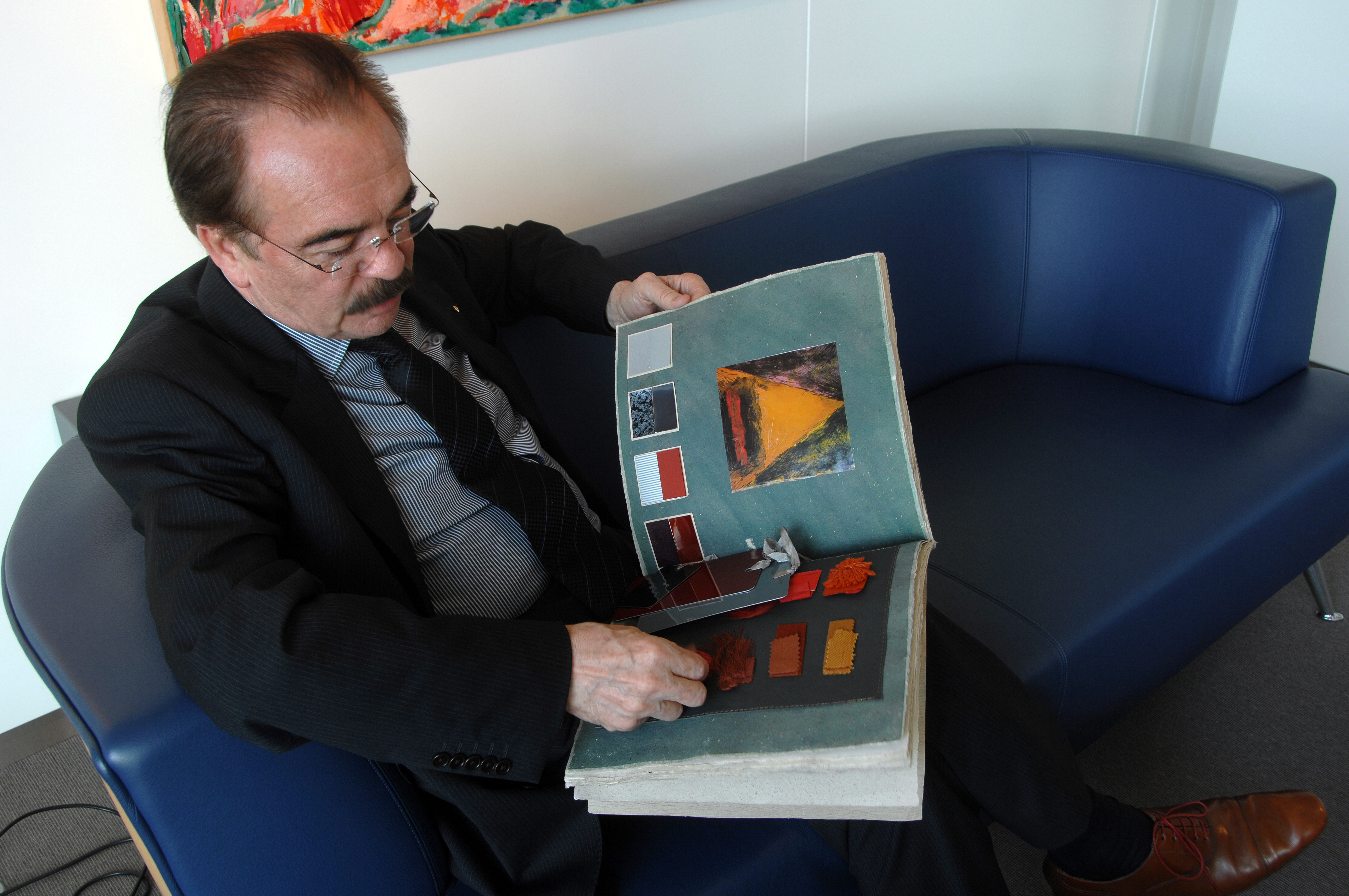
“This book is the philosophy of the product made possible by these young intellectual women! They tell a story that begins with poetry: doing less and better is no longer enough. You have to live ecology, feel the seduction, remember the past, deepen your reflection. Today we can no longer cheat, human cerebral and physical energy must inhabit the products so that they have a strength, an aura, a soul, it is the moment of truth, it is now or never. Thirty years ago, we were already talking about ecology!” Reading this document in the hands of Patrick Le Quément, then head of Renault design, above, is a world away from reading an austere and rigid set of specifications. However, in these pages, all the (good) ideas that we would find, six years later, on board the first Renault Scénic in production, are already hidden.
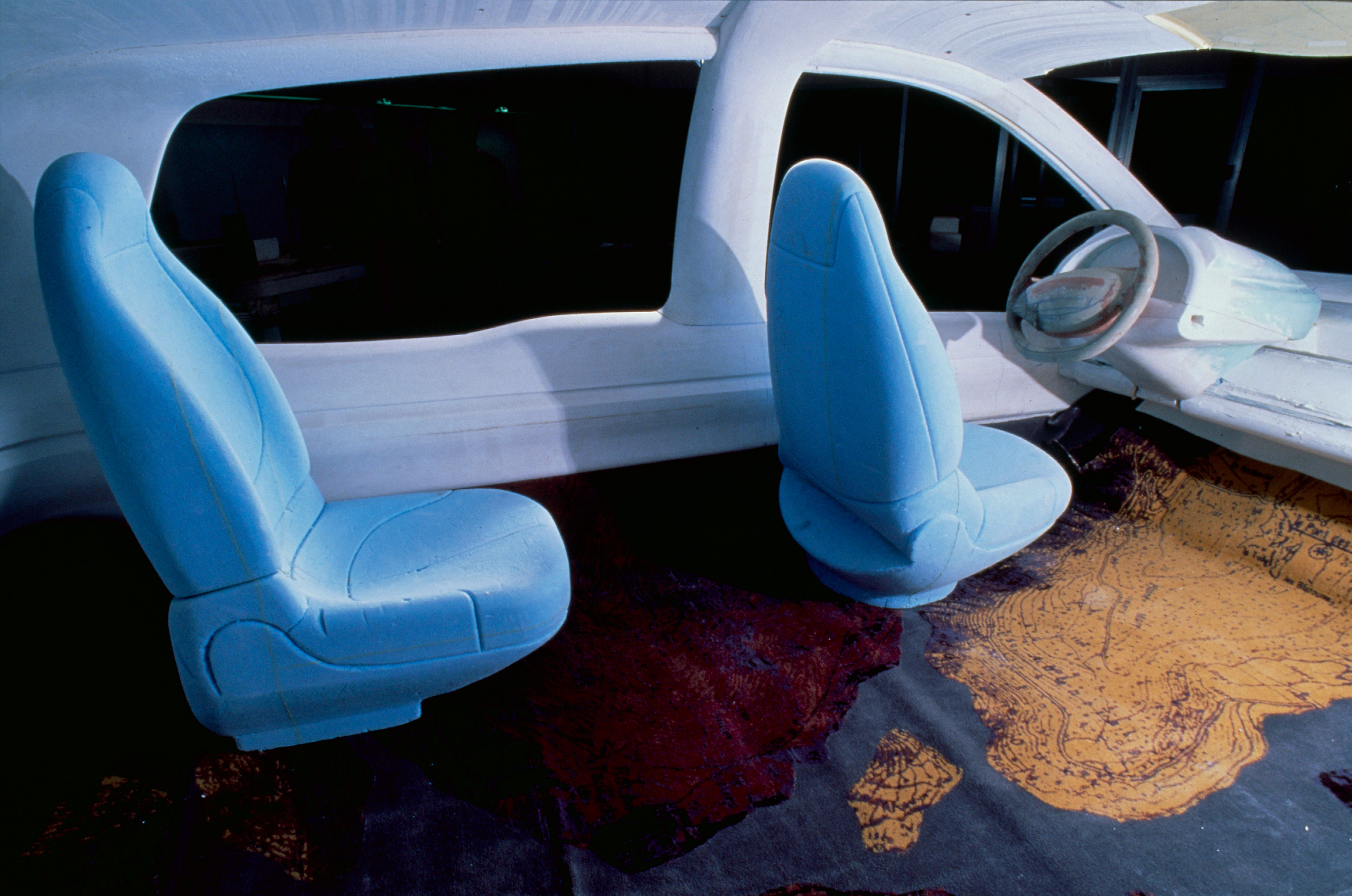
The Scénic concept finally made its first official appearance at the 1991 Frankfurt Motor Show. However, it almost never received the approval of the general management, as Le Quément recalls. “As it was the first concept car designed under the supervision of the Design Department, I wanted to reveal it to the management before its official presentation. When I entered the room, disaster struck: the concept was painted in a horrible matt colour that gave the impression that the vehicle weighed tons! That day, the project almost fell through the cracks! “

Once the concept was validated, it now had to be integrated into the development programme for the first generation of the Mégane. The first Scenic was the brainchild of designer Bill Hirsch. “The architecture was so revolutionary at the time that I decided that it needed to have a car-like, even classic style to make it look good! We didn’t try to make a vehicle that was very cutting edge.“

“On the inside, we had a lot more work to do because we had to take the dashboard from the sedan. For the exterior styling, we were in the era of the ellipse, a strong and recurring theme throughout the Mégane range from the first generation. What I regret today is not having been able to offer a specific interior because this one has no personality as it inherited the elements of the saloon. I also wish the restyling had been there from the start! It’s easy to say today that we could have gone further in terms of style, but at that time we didn’t really know whether we were going to sell 350 or 3,000 a day!” It was finally a success, and Louis Schweitzer, CEO of Renault, took the gamble of doubling production capacity to meet demand…
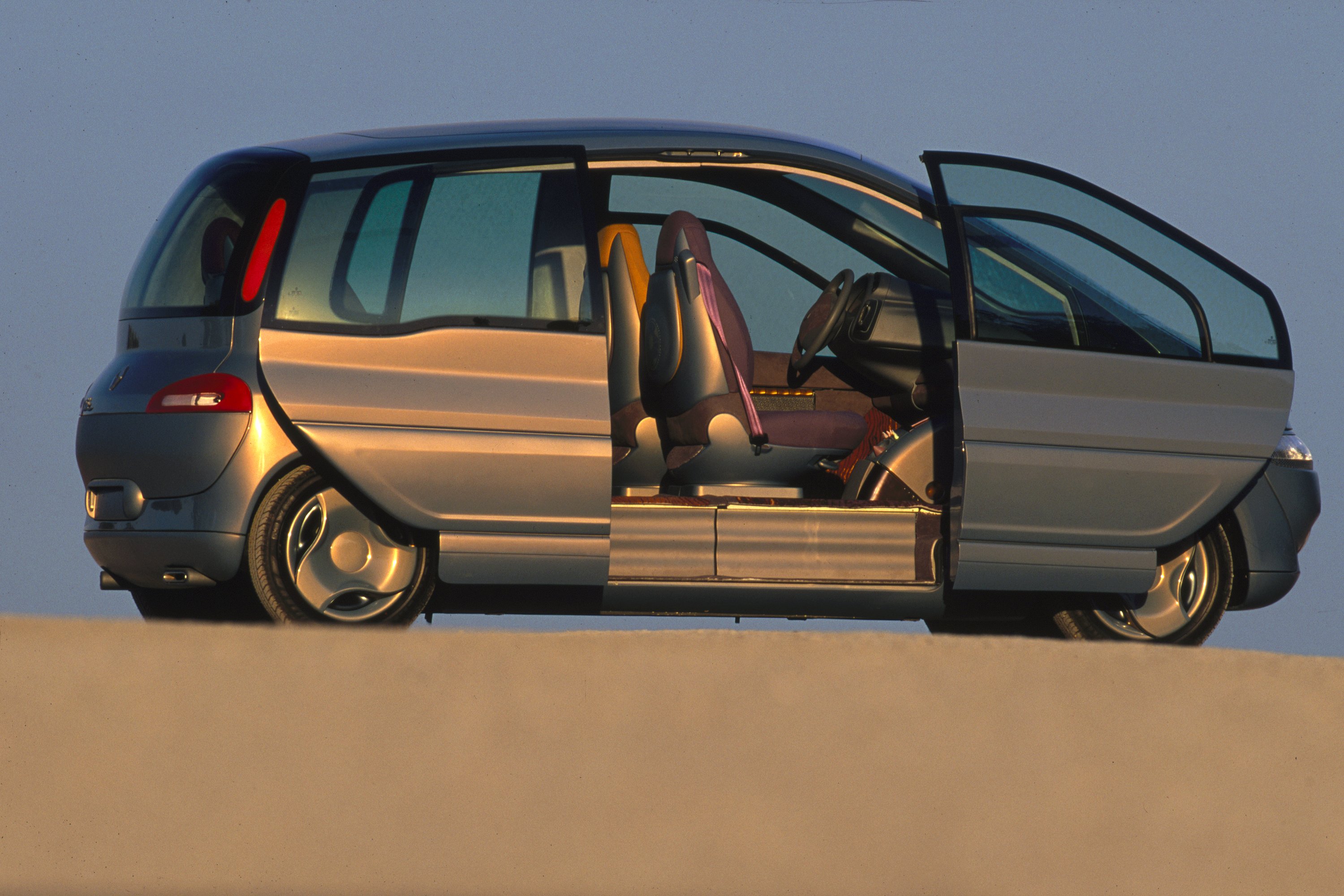
(Re)discover all the Renault concept cars and the history of the French brand’s design office – from 1960 to 2020 – in the book “Renault Concept Cars and Design Prototypes” (below, 356 pages, exclusive documents) on the website :https://lignesautoeditions.fr
